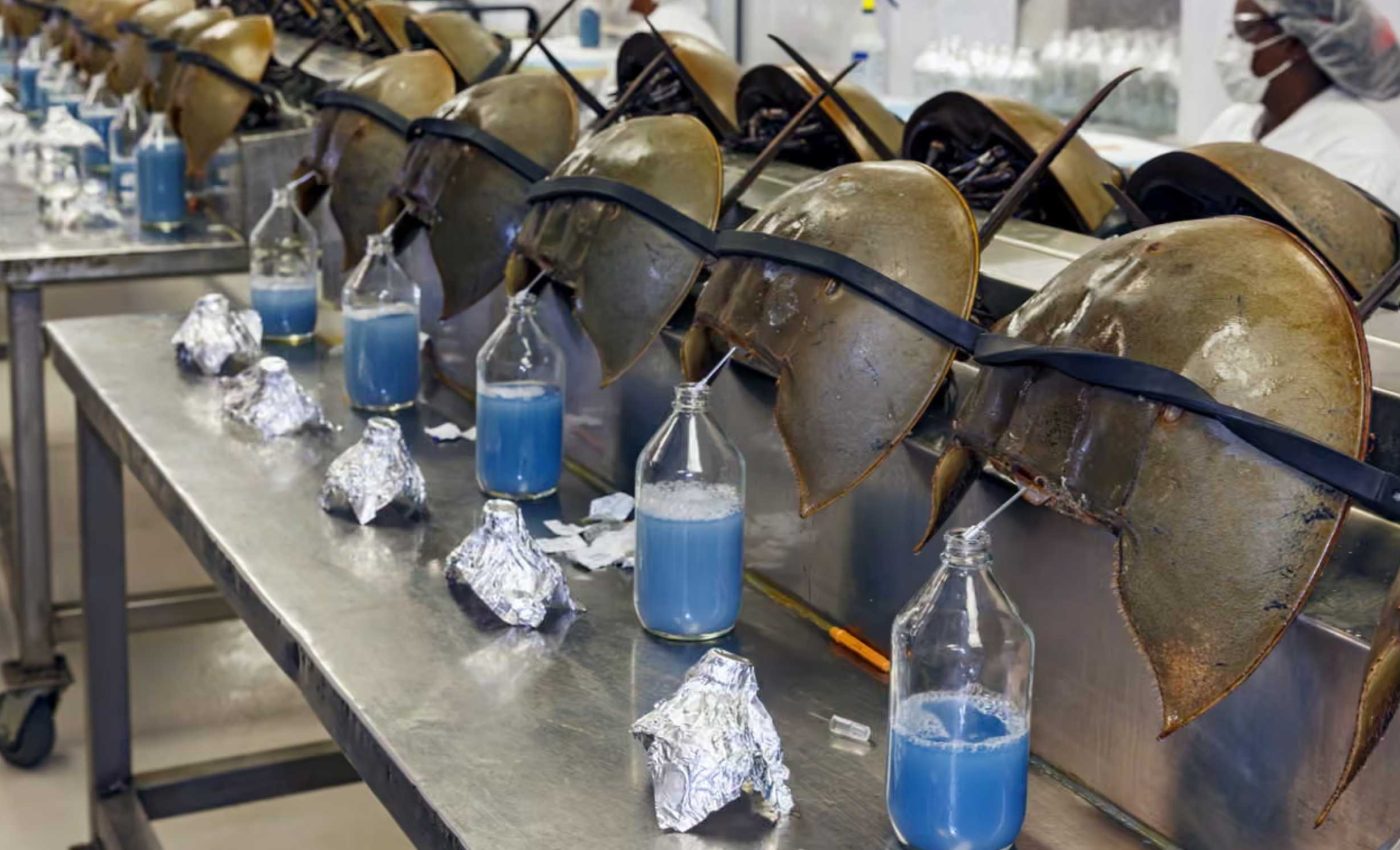
Modern medicine depends on a prehistoric crab whose future is in danger
Medicine leans on a living animal to keep people safe. Labs bleed horseshoe crabs along the U.S. East Coast to test for dangerous contamination.
In 2021, labs along the East Coast collected 718,809 horseshoe crabs for biomedical use, the most on record since 2004. That spike tells a story about risk, responsibility, and choices we can make.
Horseshoe crab blood and science
Doctors must keep injectable drugs free of endotoxins, bacterial fragments that can trigger fever and shock. The field needed a fast and reliable way to spot them.
In the 1960s, researchers adopted limulus amebocyte lysate, a crab blood extract that clots when endotoxins are present. It became the industry standard for testing sterile medicines and devices.
Lead researcher Winsor H. Watson III of the University of New Hampshire (UNH) studies horseshoe crab behavior and reproduction. His team has focused on what happens after biomedical bleeding.
The test’s reach is massive, touching vaccines, IV fluids, and implants. It is a quiet safety net inside modern care.
Horseshoe crabs nearing extinction
Bleeding facilities handle crabs for hours, sometimes more than a day, before release. Handling can leave some animals weak at the very time they need to spawn.
Horseshoe crabs mature slowly and invest heavily in a few breeding seasons. Populations that take years to rebuild can be pushed off balance quickly.
State rules differ, so pressure and timing vary by beach. Uneven oversight means the stress does not land evenly on the species. Spring is when the stakes are highest. Crabs need to lay millions of eggs in a short window.
Birds that run on crab eggs
Delaware Bay is the principal spring staging area for red knots. They depend on horseshoe crab eggs for rapid weight gain.
The birds time their arrival to peak spawning. When eggs are scarce, they leave with less fuel and miss Arctic breeding windows.
Fewer eggs on the sand can mean fewer chicks later. Local counts each May track both eggs and birds. Those tallies tell managers whether the season kept pace with migration.
An alternative many labs can use
A lab made reagent called recombinant factor C, a copy of the crab clotting protein, can replace the blood based test in many settings. It targets the same bacterial trigger without using animal blood.
Europe took a formal step in 2020 by adding a chapter that accepts rFC to its official quality rulebook. That signaled a practical path for regulators and manufacturers.
Early adopters report fewer headaches when validating lots and methods. Lab teams also avoid the supply risk that comes with a wild harvest.
“We have seen that it is better,” said Jay Bolden, a senior scientist at Eli Lilly. His group used the synthetic method for COVID era antibodies.
Standards and bottlenecks
In the United States, the pharmacopoeia, a rulebook for drug quality tests, is still working through how rFC fits into core methods. Companies look to that rulebook before they change release tests.
USP issued guidance in 2020 describing a path to use rFC and noting its benefits and limits. That helped establish how to proceed without guessing.
Manufacturers also weigh validation costs, timelines, and global alignment. A method accepted in one market must still pass in others.
Once protocols are in place, switching day to day lots can feel routine. Supply chains stabilize when they are not tied to wild animals.
What bleeding does to crabs
A New Hampshire field study tracked bled females during spawning and found changes in locomotion and mating behavior. Bled animals were less likely to show up on beaches and pair.
Those behavioral shifts mean fewer eggs reach the sand. That is a problem that numbers alone can hide. Scientists warn that sub-lethal impacts can compound over time. A small hit this season can echo into next spring’s cohort.
“We are up against this system that really prioritizes money over the health of the stock,” said Larry Niles, a wildlife biologist. The focus on short term supply obscures long term losses.
Horseshoe crabs and human health
Adopting rFC where it fits, tightening handling rules, and protecting spawning females can lower pressure. That mix keeps medicines safe while keeping the ecological web intact.
Crab handling can be safer with simple steps, including no tail lifting and keeping animals shaded and wet. Returning crabs to their capture sites also matters.
Data transparency needs to improve across states and companies. Clear reporting on collection, handling, and post release outcomes lets science fix weak points.
There is no single switch that solves every case. But using less blood, and using it smarter, gets us closer to the promise inside that blue fluid.
Photograph: Ariane Mueller.
—–
Like what you read? Subscribe to our newsletter for engaging articles, exclusive content, and the latest updates.
Check us out on EarthSnap, a free app brought to you by Eric Ralls and Earth.com.
—–













